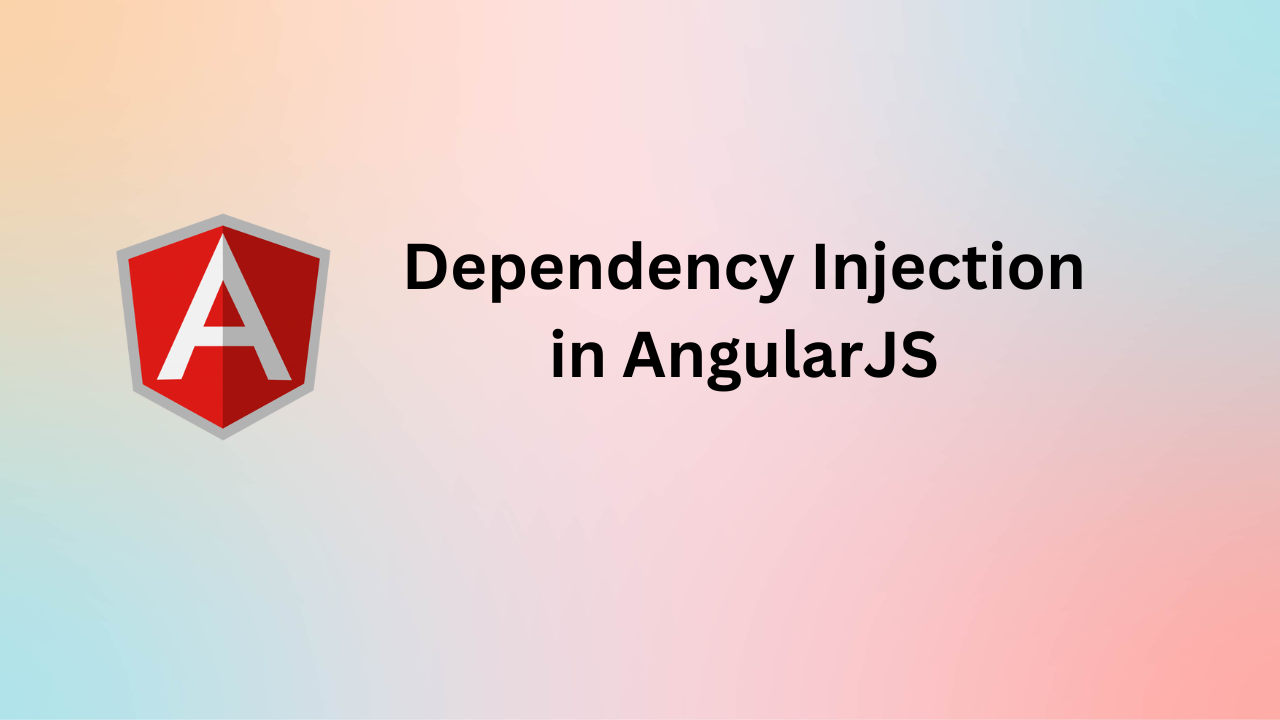Learn everything about Dependency Injection in AngularJS, including how it works, its benefits, key concepts like services, providers, and injectors, and prepare with interview questions for beginners, intermediates, and advanced developers.
Dependency Injection (DI) is one of the cornerstones of AngularJS, enabling efficient management of dependencies and promoting modular, testable code. Whether you are a beginner or preparing for an interview, understanding Dependency Injection in AngularJS is crucial. This blog will explore what DI is, how it works in AngularJS, why it is important, and some commonly asked interview questions.
Table of Contents
What is Dependency Injection?
Dependency Injection is a software design pattern that deals with how components acquire their dependencies. In simpler terms, it’s a way to provide objects (dependencies) that a component needs, rather than hardcoding them into the component.
For instance, if a controller requires a service to fetch data, DI ensures that the service is injected into the controller when needed.
Example:
Instead of creating an instance of a service directly in a controller, AngularJS uses DI to inject the required service automatically.
angular.module('myApp', [])
.controller('MyController', function($scope, DataService) {
$scope.data = DataService.getData();
});
Here, DataService is injected into MyController through DI.
How Does Dependency Injection Work in AngularJS?
In AngularJS, DI is implemented through the following elements:
1. Injector
The injector is a service in AngularJS responsible for finding the correct dependencies and injecting them where needed. It reads the dependency information from the function signature.
2. Providers
AngularJS uses providers to create and configure services. There are several built-in providers, such as $provide, $httpProvider, and $routeProvider. Developers can also create custom providers for specific use cases.
3. Services
Services in AngularJS are singleton objects or functions responsible for handling specific logic. These can be injected into controllers, directives, or other services.
4. Factories
Factories are another way to create services. A factory is a function that returns an object and is often used when you need to construct and return a custom object.
5. Constants and Values
Constants and values provide static data to AngularJS applications and can also be injected wherever required.
Key Features of AngularJS Dependency Injection
- Declarative Dependency Declaration: AngularJS analyzes function parameters to determine dependencies.
- Singleton Services: Services are created once and reused throughout the application.
- Dynamic Dependency Resolution: Dependencies are resolved at runtime.
- Ease of Testing: Dependencies can be mocked or replaced during testing.
Why is Dependency Injection Important in AngularJS?
Dependency Injection offers several benefits that make it a critical feature in AngularJS development:
- Modularity: Encourages breaking down applications into small, reusable components.
- Maintainability: Changes to dependencies can be made independently, reducing the impact on other parts of the application.
- Testability: Dependencies can be easily mocked during unit testing, enabling better test coverage.
- Flexibility: Promotes the use of different implementations for a single dependency.
- Code Reusability: Services and components can be reused across the application without duplication.
Dependency Injection in Action: Example
Below is a simple example that demonstrates how DI works in AngularJS:
Step 1: Create a Service
angular.module('myApp', [])
.service('GreetingService', function() {
this.getGreeting = function() {
return 'Hello, AngularJS!';
};
});
Step 2: Inject the Service into a Controller
angular.module('myApp')
.controller('GreetingController', function($scope, GreetingService) {
$scope.greeting = GreetingService.getGreeting();
});
Step 3: Use the Controller in the HTML
<div ng-app="myApp" ng-controller="GreetingController">
<p>{{ greeting }}</p>
</div>
In this example, GreetingService is injected into GreetingController. The controller then uses the service to fetch a greeting message.
Common Interview Questions on Dependency Injection in AngularJS
Beginner Level
- What is Dependency Injection in AngularJS? Dependency Injection is a design pattern used in AngularJS to supply components with their dependencies instead of hardcoding them.
- What are the advantages of using Dependency Injection?
- Modularity
- Ease of testing
- Code reusability
- Improved maintainability
- How does AngularJS resolve dependencies? AngularJS resolves dependencies by analyzing the function signature and injecting the required services dynamically.
Intermediate Level
- What is the difference between a factory and a service in AngularJS?
- A factory returns an object that contains methods, while a service is a constructor function instantiated with the
newkeyword. - Factories are more flexible as you can construct custom objects.
- A factory returns an object that contains methods, while a service is a constructor function instantiated with the
- What is the role of the
$injectproperty in AngularJS?$injectis used to manually define dependencies for a function, especially when minification might alter parameter names. - How can you create a custom service in AngularJS? By using
.service(),.factory(), or.provider()methods.
Advanced Level
- What are the different ways to declare dependencies in AngularJS?
- Inline Annotation
$injectproperty- Array-style Annotation (most commonly used)
- Explain how DI helps in unit testing AngularJS applications.
- Dependencies can be mocked or stubbed easily.
- The ability to isolate components improves test reliability and accuracy.
- What is the difference between a provider and a factory?
- A provider allows configuration during the application’s config phase, whereas a factory is a simple function returning an object.
Tips for Preparing Dependency Injection Interview Questions
- Understand Core Concepts: Focus on understanding how DI works at a fundamental level in AngularJS.
- Hands-on Practice: Implement DI in small projects to get practical experience.
- Explore Advanced Topics: Learn about providers,
$injector, and custom services. - Mock Dependencies: Practice mocking dependencies for testing.
Conclusion
Dependency Injection is a game-changer in AngularJS, offering a clean and modular approach to handling dependencies. It simplifies development, promotes code reusability, and makes testing more efficient. By mastering Dependency Injection, you not only enhance your skills as a developer but also gain an edge in interviews.
Whether you’re working on a new AngularJS project or managing a legacy application, understanding DI is essential. Start by practicing simple examples, explore advanced concepts like providers and factories, and you’ll soon appreciate the elegance and power of Dependency Injection in AngularJS.
Master it, and you’ll unlock the full potential of AngularJS! Happy coding!

